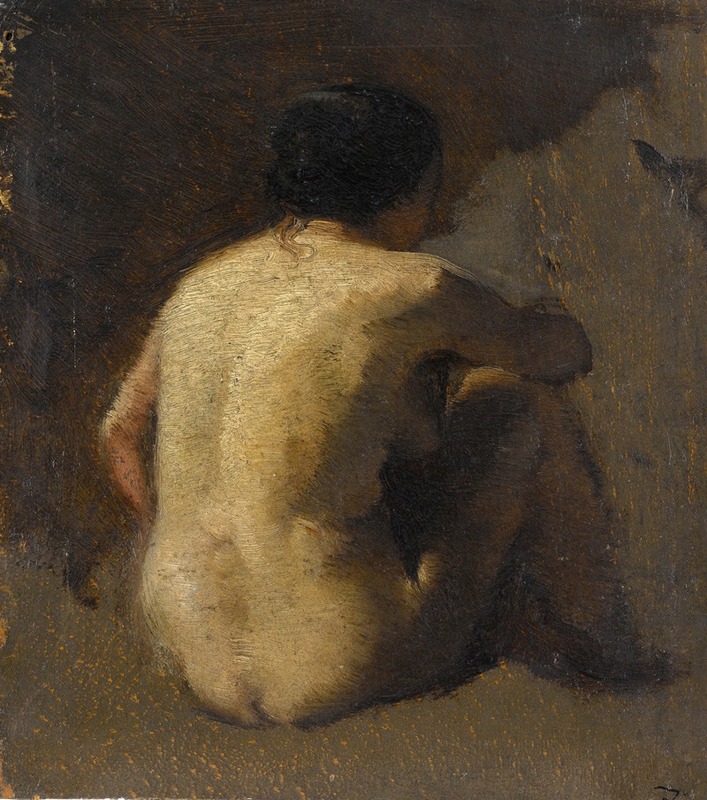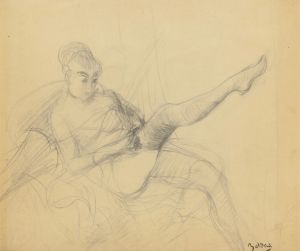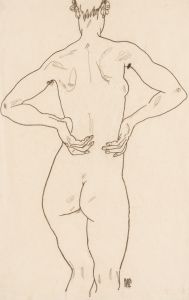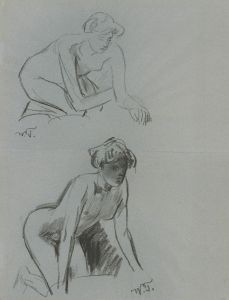
Femme nue assise, vue de dos
A hand-painted replica of Félix Ziem’s masterpiece Femme nue assise, vue de dos, meticulously crafted by professional artists to capture the true essence of the original. Each piece is created with museum-quality canvas and rare mineral pigments, carefully painted by experienced artists with delicate brushstrokes and rich, layered colors to perfectly recreate the texture of the original artwork. Unlike machine-printed reproductions, this hand-painted version brings the painting to life, infused with the artist’s emotions and skill in every stroke. Whether for personal collection or home decoration, it instantly elevates the artistic atmosphere of any space.
Femme nue assise, vue de dos is a painting by the French artist Félix Ziem, who is best known for his landscape and marine scenes, particularly those depicting Venice and the Mediterranean. Born on February 26, 1821, in Beaune, France, Ziem was a prominent figure in the 19th-century art world and was associated with the Barbizon School, a movement that emphasized naturalism and outdoor painting.
Ziem's artistic journey began with studies in architecture, but he soon shifted his focus to painting. His travels across Europe, especially to Italy, greatly influenced his work. Venice, with its unique light and architecture, became a recurring subject in his paintings. However, Ziem was also known for his versatility and ability to capture a variety of subjects, including portraits and figure studies.
Femme nue assise, vue de dos, which translates to "Seated Nude Woman, Seen from Behind," is one of Ziem's lesser-known works. This painting diverges from his typical landscapes and seascapes, showcasing his skill in rendering the human form. The artwork features a nude woman seated with her back to the viewer, emphasizing the contours and natural beauty of the human body. The composition is intimate, focusing on the play of light and shadow across the woman's skin, highlighting Ziem's adeptness in capturing the subtleties of form and texture.
The painting reflects the 19th-century European art scene's fascination with the nude as a subject, which was often explored for its aesthetic and academic qualities. During this period, the depiction of the nude was considered a testament to an artist's technical skill and understanding of anatomy. Ziem's approach in Femme nue assise, vue de dos is both sensitive and respectful, aligning with the artistic conventions of his time.
Ziem's work, including Femme nue assise, vue de dos, is characterized by a loose, expressive brushwork that captures the essence of his subjects rather than minute details. This technique allows for a sense of movement and vitality, which is evident in the fluid lines and soft transitions of tone in the painting. The use of color is subtle yet effective, with a palette that enhances the naturalism of the scene.
Throughout his career, Félix Ziem received significant recognition for his contributions to art. He was awarded the prestigious Légion d'Honneur in 1857, and his works were exhibited in numerous salons and exhibitions. Today, Ziem's paintings are held in various public and private collections, with his landscapes and Venetian scenes being particularly celebrated.
While Femme nue assise, vue de dos may not be as widely recognized as some of Ziem's other works, it remains an important part of his oeuvre, demonstrating his range as an artist and his ability to capture the human form with grace and sensitivity. The painting serves as a testament to Ziem's artistic versatility and his place within the broader context of 19th-century European art.


















